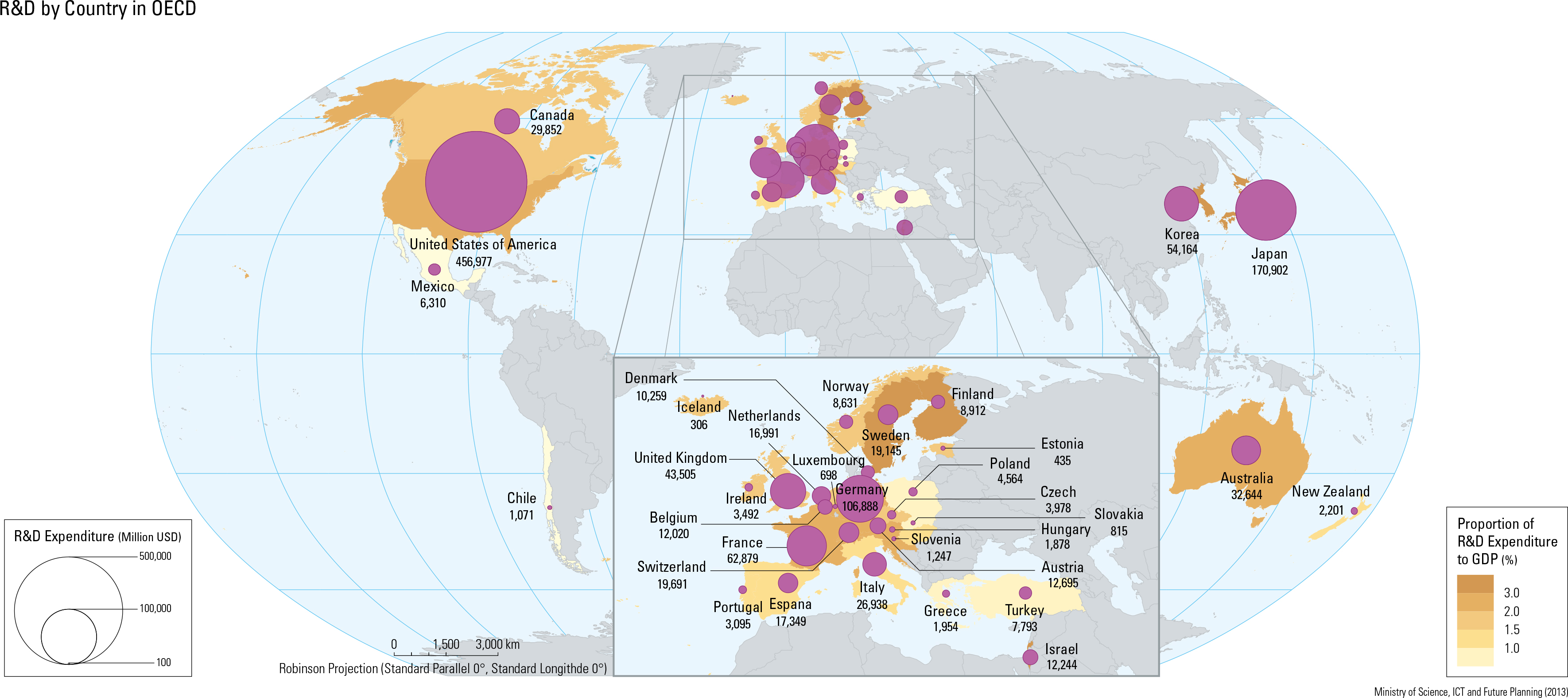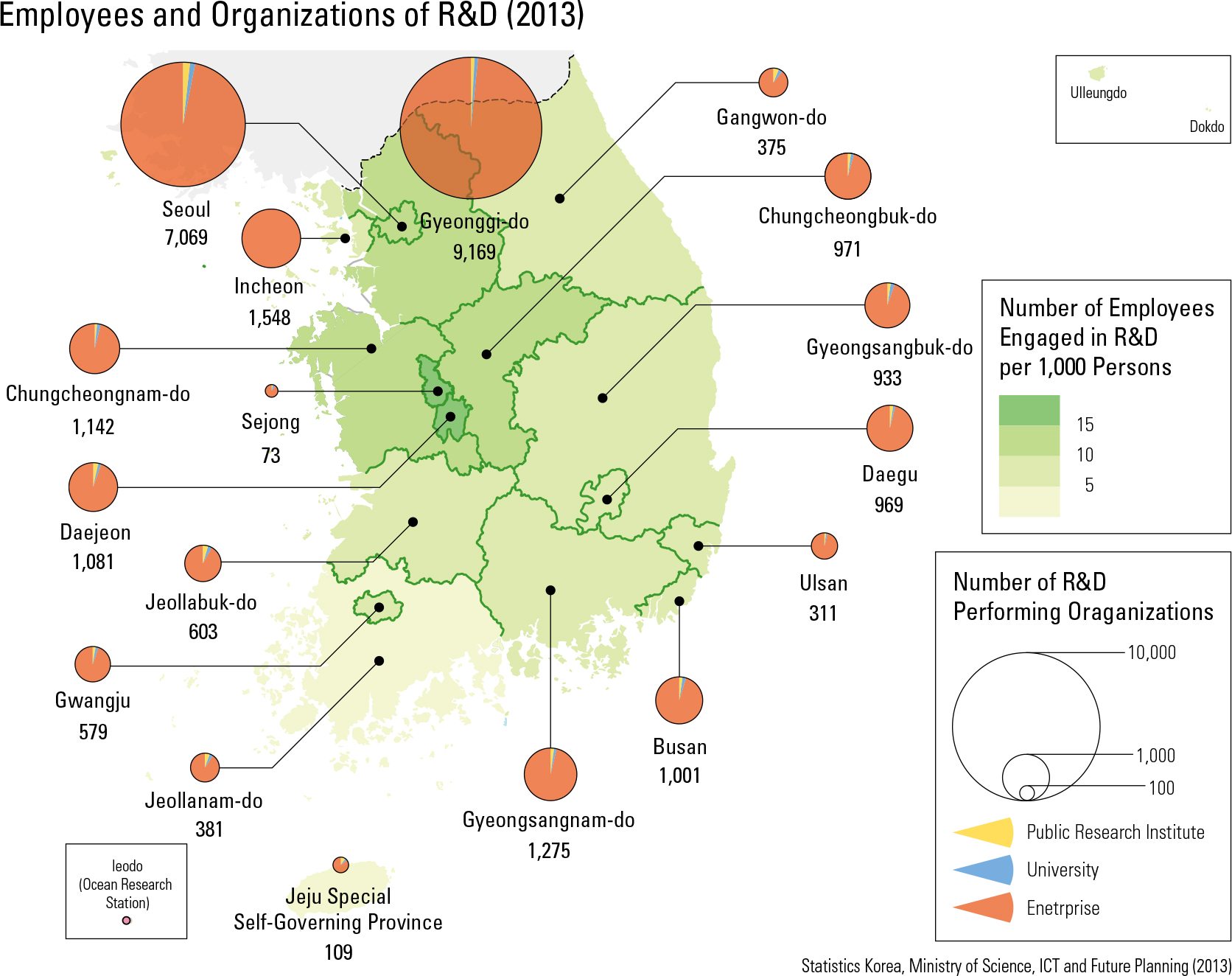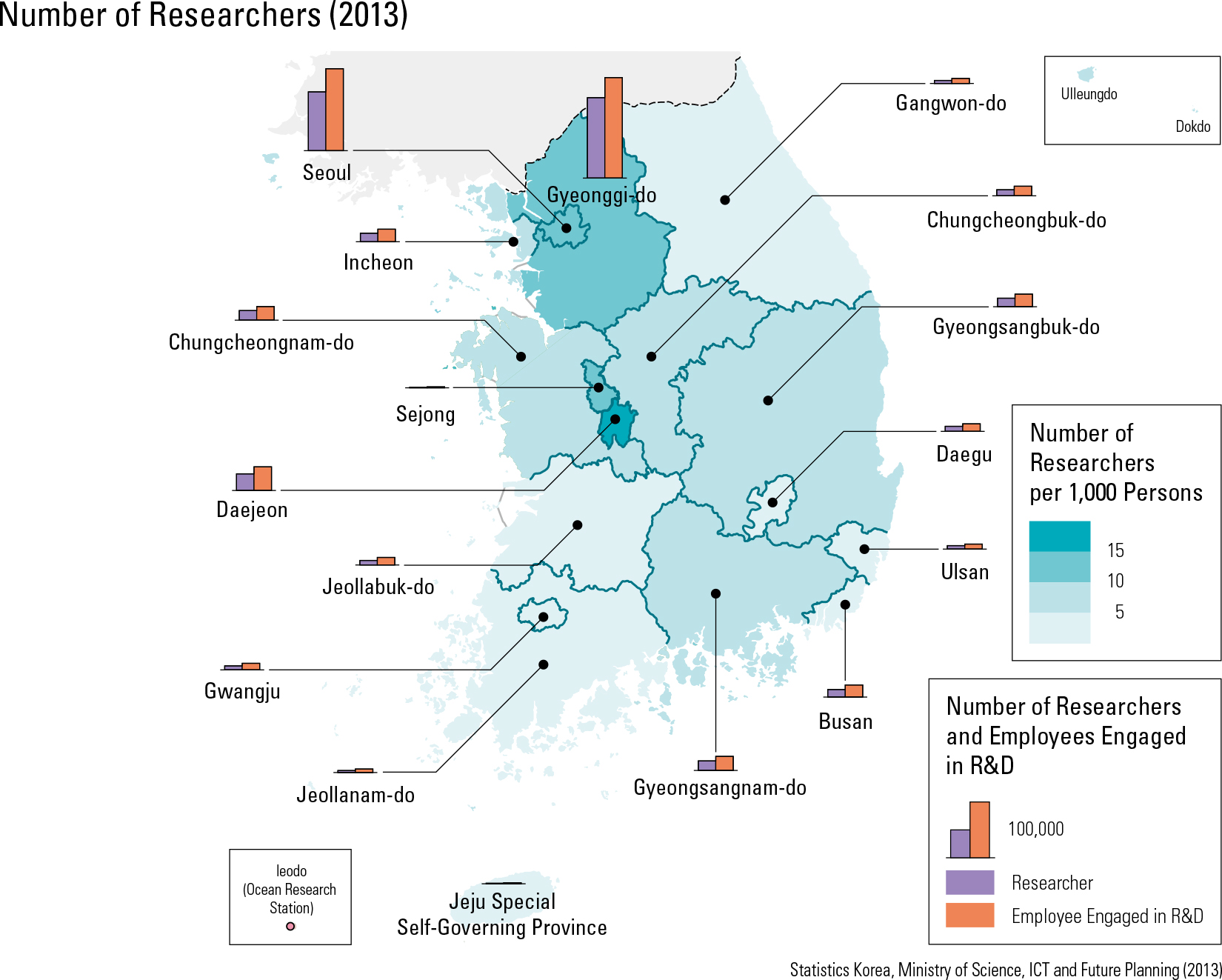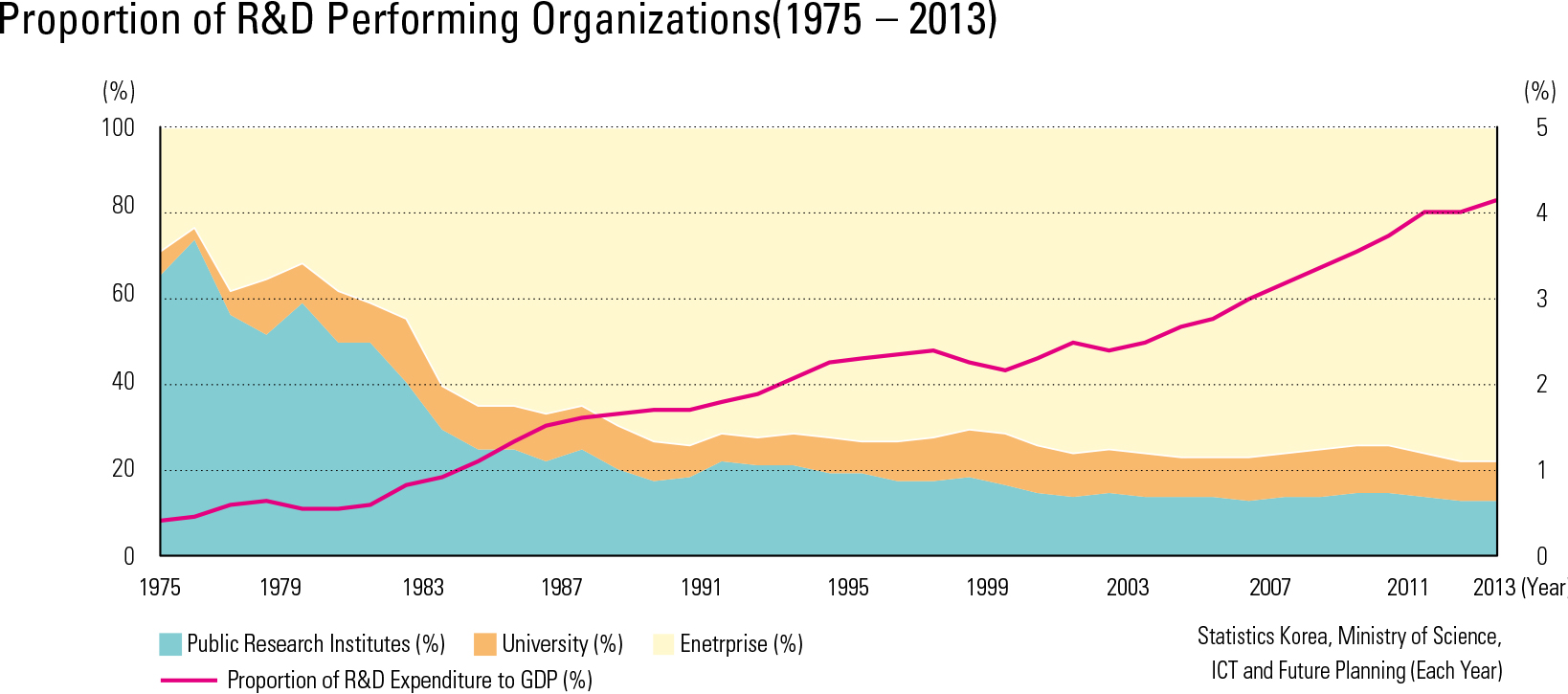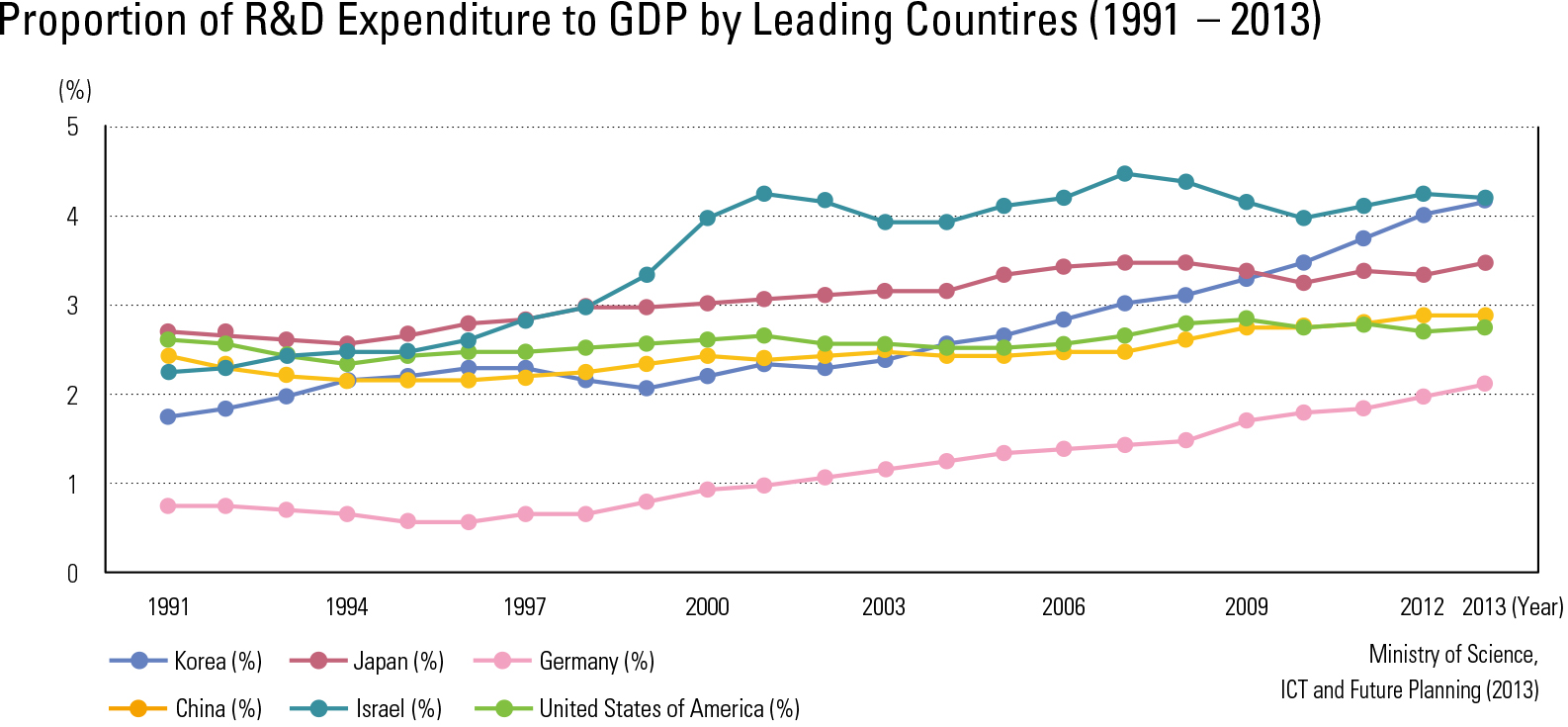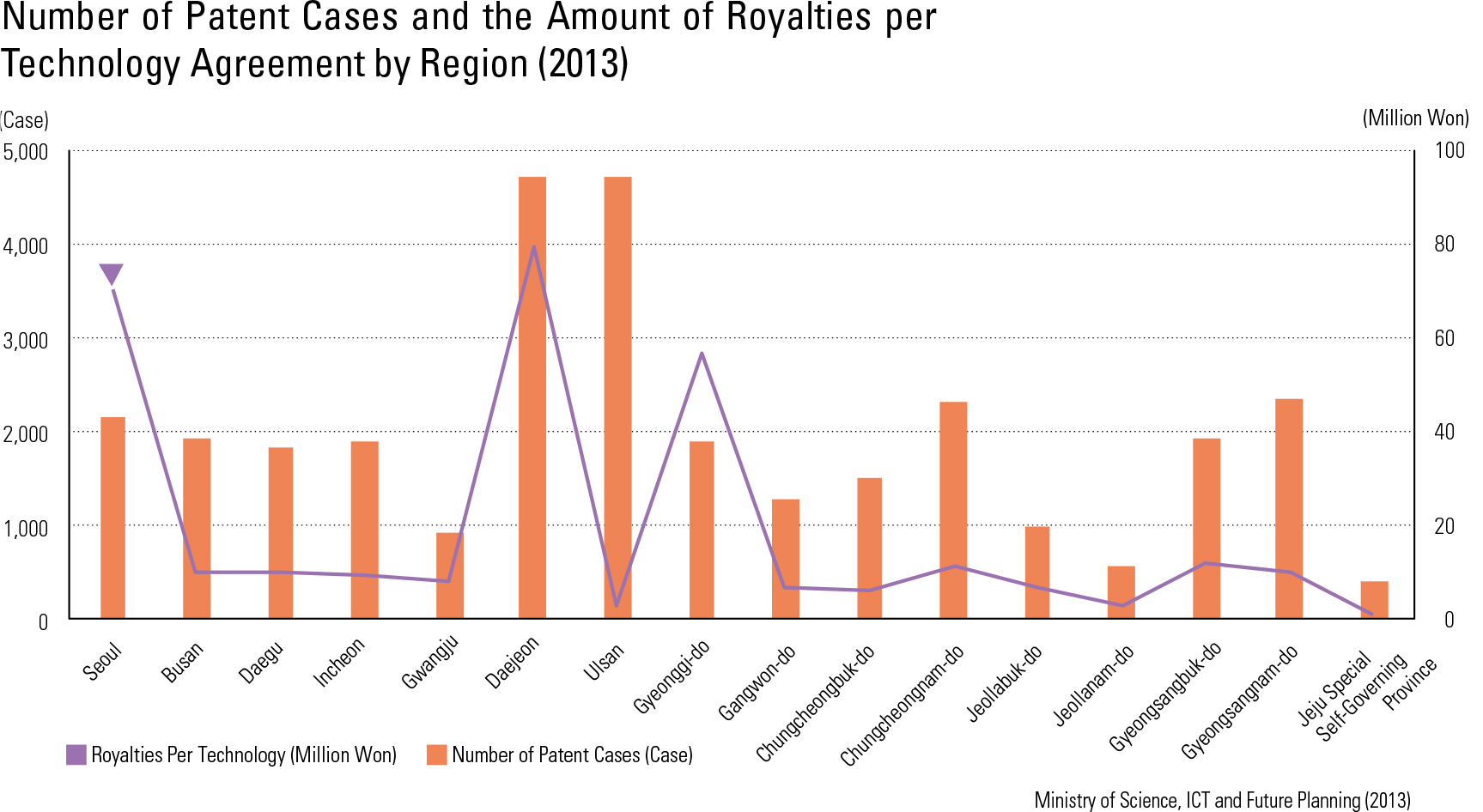English III
Since the 1980s, Korea's industry has been transformed into an innovation-led industrial structure through technology investments and advanced technology, as well as human resource development. The R&D ratios to GDP among OECD countries reveal that Israel is currently in first place at 4.2%, with South Korea in second place at 4.1%, followed by Japan (3.5%), Finland (3.4%), Sweden (3.3%), and Denmark (3.1%). A review of the R&D performing organizations shows that in the 1970s, over half of them were public research institutions, but starting in 1980, the proportion of private enterprises increased rapidly, and after 1989, they accounted for more than 70%. In 2013 the proportion of public research organizations accounted for 12.4%, private enterprises accounted for 78.5%, and universities accounted for 9.2%. An examination of R&D performing organizations by region shows that most R&D organizations are located in the Greater Seoul Metropolitan area of Gyeonggi-do (33.2%) and Seoul (25.6%), followed by Incheon (5.6%), Gyeongsangnam- do (4.6%), Chungcheongnam-do (4.1%), and Daejeon (3.9%). The locations with the greatest number of researchers per thousand Persons are Daejeon (19.5 persons), Sejong-si (12.7 persons), Gyeonggi-do (12.8 persons), Seoul (10.4 persons), and Chungcheongnam-do (8.4 persons). The numbers for local research and development personnel also appear similar to the numbers for researchers by region. Daejeon had the most R&D personnel per thousand Persons at 27.5 persons, followed by Sejong-si (16.7 persons), Gyeonggi- do (14.7 persons), Seoul (14.5 persons), and Chungcheongnam-do (11.9 persons).
page_2 |
